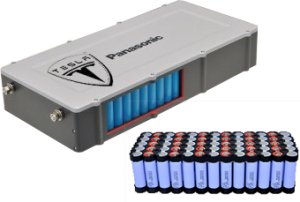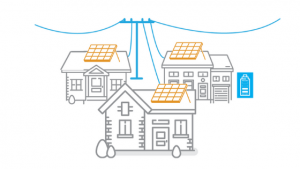

If you’re currently living in a mains-powered home, running out of electricity probably isn’t something you lose any sleep over. Sure, using more power will lead to a higher bill – but there’s always an unlimited supply at the power point to keep everything running.
But when you’re living off-grid, and your property relies entirely on solar panels and batteries, it’s critical to know exactly how much electricity you’re going to need – and when you’re going to need it.
When you initially inquire about installing an off-grid system, the first step is to create an energy load profile to help determine the ideal system size – including the number of solar panels, the type and capacity of the batteries, and many other critical hardware decisions.
Get it right, and you’ll enjoy many years of reliable power without any compromises to your lifestyle. But get it wrong, and you may end up living under energy constraints, be forced to rely on a backup generator – or even risk overloading the system and shutting it down entirely.
But what exactly is an energy load profile? And what’s involved in putting one together? Well today, we’re going to take you through everything you need to know – so let’s take a closer look.
In simple terms, an energy load profile (often just called a load profile) is used to calculate both how much electricity your property needs each day – and how much you may need at any one time. It’s a list of every electrical appliance on your property – both existing and planned – broken down into the different areas of your home.
In addition to listing each electrical item, the profile also requires the following information:
For example, let’s suppose you have a large LCD television, and after checking the product sticker or searching for the model number online, you find that it consumes 200 watts of power.
You might then estimate that the TV is used for an average of three hours per day on weekdays, and five hours per day on weekends – which equals 25 hours per week, or 3.6 hours per day. Then, based on the TV’s power consumption of 200 watts, this means it consumes 720 watt-hours per day (3.6 x 200), or to put it another way, 0.72 kilowatt-hours (kWh).
On the Off Grid Energy website, we have a free energy load profile that we use in our initial consultations. You’ll notice that some of the information is provided by you, while some other sections are completed by one of our solar consultants. Of course, we can guide you through the entire process and help you to make accurate estimates, ensuring that your completed profile is a complete picture of your electricity needs – both now and in the future.
When it comes to sizing the system, the energy load profile is the only way for us to answer these fundamental questions:
Once we have a clearer understanding of your electricity use and your living habits, we can then use this information to begin tailoring an off-grid solar and battery system to your specific needs. And while this process may seem complicated, we know exactly how to gather all of this information quickly and easily – working with you throughout the entire process.
Using your load profile, we calculate your daily energy requirement in kilowatt-hours (kWh). We then use it to size your solar array and battery system, ensuring you are generating and storing enough electricity to power your property – with enough in reserve to draw from whenever you need it.
For many homes, the electricity use can vary dramatically between summer and winter. And because your solar production will also vary throughout the year, we need to understand these differences in your seasonal consumption.
For example, in warmer weather when the days are longer, you may need more electricity for appliances such as air conditioners, fans, fridges, freezers, or even a swimming pool. And when the weather is cooler and the days are shorter, you may need more electricity for lights, heaters, hot water systems, washing machines, and perhaps even a tumble dryer.
As a general rule, we design our off-grid solar systems with your winter consumption in mind, so that even when your solar production is low, you’re still generating and storing enough energy to meet all of your needs.
We also use the energy load profile to calculate the maximum amount of electricity your property will need at any one time – also known as your peak power demand.
While much of your energy use will often be spread throughout the day, you’ll invariably have moments when many appliances are all running at the same time – causing your peak demand to spike dramatically. Devices containing motors may also consume a large burst of electricity when you first turn them on, such as air conditioners, power tools, and pumps.
Understanding your peak power demand is so important because it’s needed to correctly size your solar and battery inverters – which determine the maximum amount of electricity you can use at any one time. If an installer does not size this equipment correctly, you run the risk of exceeding your system capacity and triggering a shutdown – leaving you without power.
At Off-Grid Energy, we have many years of experience in quoting, designing, and installing off-grid systems. Working together, we can assess your electricity needs, make helpful and practical suggestions, and present you with multiple options that are tailored to your specific property.
If you’re building a new property, taking a smart approach to your electricity consumption is the name of the game. Energy-efficient appliances and a forward-thinking house design are by far the best ways to minimise your electrical requirements and reduce the size and cost of your solar system – all while maintaining a comfortable lifestyle.
On the Off Grid Energy website, we’ve compiled an extensive library of helpful advice to improve energy efficiency across many different areas of your home. When selecting appliances, you should also pay close attention to the energy star rating and prioritise those with low power consumption, which can make a significant difference to your overall electricity use.
You should also give careful consideration to the design of your home, particularly aspects such as passive heating and cooling, wall and ceiling insulation, and thermal mass. All of these factors can decrease or even eliminate the need for air conditioners and heaters, reduce your overall energy demand, and save you thousands of dollars on the cost of your solar system.
“The 40% of household energy used for heating and cooling to achieve thermal comfort could be cut to almost zero in new housing through sound climate responsive design.” yourhome.com.au
Naturally, your builder should be able to provide you with options for designing an energy-efficient home that utilises natural heating and cooling. As part of the solar design process, we can also give you practical advice drawn from our many years of experience, and the Australian government website yourhome.com.au also has helpful information covering these areas and many more.
We hope this article has given you a clearer picture of why your energy load profile is an essential step in planning the perfect off-grid system.
And while it may seem a little daunting, you can rest assured that the team at Off Grid Energy is here to work with you throughout the entire process. Utilising our special in-house design software, we can quickly turn your completed energy load profile into a compliant system design – complete with a full quotation and detailed performance estimates.
If you’d like to speak with one of our solar consultants, we’d love to hear from you, and to help us create the most efficient phone consultation – you can complete and send your energy load profile form back to us in advance. This preliminary information gives us vital background information for the discussion, and allows us to quickly tailor the design to your specific needs.
If you have any further questions, feel free to get in touch with a member of our team, read more about the different types of off-grid systems, or browse through our recent articles for more helpful information.




Some factors can be confidently estimated at the time of quoting, whilst others are subject to change, outside of your and our control. If any of these factors do change…

Learn about the different types of lithium-ion batteries that are available and what applications each one is good for

We often get asked what’s the difference between a virtual power plant and micro grid? Often you will hear the terms being used interchangeably, but they are different…

Many of today’s off-grid homes are just as comfortable and feature-packed as their mains-powered counterparts.
Electrical Contractor Licenses: VIC REC-31913, TAS 15608294, WA EC15901, SA PGE278927, NSW 279181C
We acknowledge the Traditional Owners of Country throughout Australia and recognise their continuing connection to land, waters and culture. We would like to specifically acknowledge the Kaurna, Wathaurong, Wonnarua, Wiradjuri and Boonwurrung people. We pay our respects to their Elders past, present and emerging.